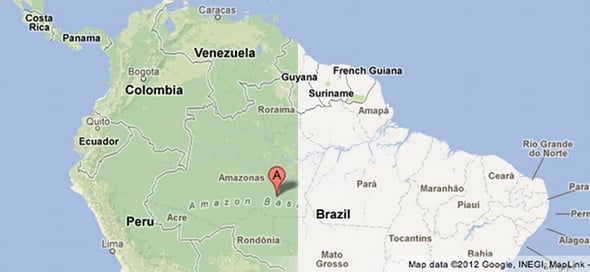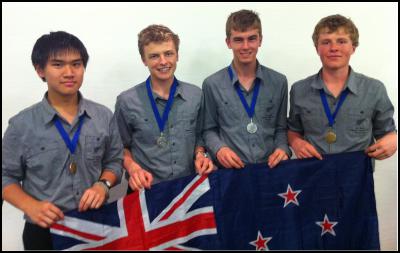"Let's just say that it all began when Keith and I took a
trip." That's the folksy and disarming style with which prolific
Saskatoon writer Candace Savage takes us into her latest book, A
Geography of Blood.
But what begins as a wide-eyed discovery of a part of the province she had barely noticed before becomes a gradual unearthing of all the mysteries she feels that part of southwest Saskatchewan has kept hidden for years.
She and her partner, Keith, stumbled onto Eastend driving up from Wyoming back in September 2000. Their happy accident led to a brief visit, which parlayed through a stay at the Wallace Stegner House, into them buying their own home and becoming part-time citizens of Eastend.
Savage then goes on to tell how she and Keith drove off in just about every direction at once, trying to explore this country new to them, and how they endured breakdowns and getting lost. "If you've never squeezed into the cab of a tow truck with three dogs, you really haven't lived," she cheerfully relates, all part of that easygoing feel with which she cushions her reader. But there's more going on here.
Before she even got to East-end she made fun of a Wild West show in Cody, Wyo., blasting the iconic Buffalo Bill for his reputed killing of 4,860 buffalo in "just 18 months."
And before she's got out to see the new big draw in Eastend, the T. Rex Discovery Centre, celebrating Scotty, another in a long line of local dinosaurs, Savage takes issue with iconic, short-stay Eastend author Wallace Stegner and his famous book Wolf Willow. There's something about the book that bothers Savage, but she can't put her finger on it.
With a title like A Geography of Blood, you just know it isn't going to be dinosaur blood, even after the jolly time she has with the kind people at the museum. She finds teepee rings on a walk and, with Stegner's avowed discomfort over an almost ghostly native presence swirling in her head, begins to ask herself, as Stegner did, how the mainstream white population to which she belongs made the jump from untamed frontier to peaceful farm country.
Attentive fiction and history readers will know about Guy Van-derhaeghe's Englishman's Boy, with its graphic depiction of the Cypress Hills Massacre of 1873, and Walter Hildebrandt and Brian Hubner's 2007 history of the Cypress Hills - Savage mentions them in her bibliography - to say nothing of the burgeoning First Nations literature that is telling its own stories of the West. But this is Savage's own awakening to how, somehow, she - a historian in her own way - missed the wholesale disappearance of First Nations people from the prairie to make way for her people, the settlers. But, of course, they haven't disappeared and she goes looking for them.
A Geography of Blood is one woman's encounter with the silence that blows across all the tee-pee rings, arrowheads and buffalo skulls that still lie in southwest Saskatchewan. She writes it as a mystery, because it's a mystery to her, even with those aforementioned books in her library. She finds Fort Walsh and Farwell's Trading Post. She learns about the treaties to settle whole nations of people in the Cypress Hills and how the Canadian government reneged on those agreements. She finds the successful native farming initiative, abandoned, and the hunger camps that followed: First Nations people were starved into going to reservations the government wanted them to take so they'd be out of the way of the new arrivals. And to see the modern wreckage of those official policies, she joins a talking circle at the federal correctional centre outside Maple Creek.
But what begins as a wide-eyed discovery of a part of the province she had barely noticed before becomes a gradual unearthing of all the mysteries she feels that part of southwest Saskatchewan has kept hidden for years.
She and her partner, Keith, stumbled onto Eastend driving up from Wyoming back in September 2000. Their happy accident led to a brief visit, which parlayed through a stay at the Wallace Stegner House, into them buying their own home and becoming part-time citizens of Eastend.
Savage then goes on to tell how she and Keith drove off in just about every direction at once, trying to explore this country new to them, and how they endured breakdowns and getting lost. "If you've never squeezed into the cab of a tow truck with three dogs, you really haven't lived," she cheerfully relates, all part of that easygoing feel with which she cushions her reader. But there's more going on here.
Before she even got to East-end she made fun of a Wild West show in Cody, Wyo., blasting the iconic Buffalo Bill for his reputed killing of 4,860 buffalo in "just 18 months."
And before she's got out to see the new big draw in Eastend, the T. Rex Discovery Centre, celebrating Scotty, another in a long line of local dinosaurs, Savage takes issue with iconic, short-stay Eastend author Wallace Stegner and his famous book Wolf Willow. There's something about the book that bothers Savage, but she can't put her finger on it.
With a title like A Geography of Blood, you just know it isn't going to be dinosaur blood, even after the jolly time she has with the kind people at the museum. She finds teepee rings on a walk and, with Stegner's avowed discomfort over an almost ghostly native presence swirling in her head, begins to ask herself, as Stegner did, how the mainstream white population to which she belongs made the jump from untamed frontier to peaceful farm country.
Attentive fiction and history readers will know about Guy Van-derhaeghe's Englishman's Boy, with its graphic depiction of the Cypress Hills Massacre of 1873, and Walter Hildebrandt and Brian Hubner's 2007 history of the Cypress Hills - Savage mentions them in her bibliography - to say nothing of the burgeoning First Nations literature that is telling its own stories of the West. But this is Savage's own awakening to how, somehow, she - a historian in her own way - missed the wholesale disappearance of First Nations people from the prairie to make way for her people, the settlers. But, of course, they haven't disappeared and she goes looking for them.
A Geography of Blood is one woman's encounter with the silence that blows across all the tee-pee rings, arrowheads and buffalo skulls that still lie in southwest Saskatchewan. She writes it as a mystery, because it's a mystery to her, even with those aforementioned books in her library. She finds Fort Walsh and Farwell's Trading Post. She learns about the treaties to settle whole nations of people in the Cypress Hills and how the Canadian government reneged on those agreements. She finds the successful native farming initiative, abandoned, and the hunger camps that followed: First Nations people were starved into going to reservations the government wanted them to take so they'd be out of the way of the new arrivals. And to see the modern wreckage of those official policies, she joins a talking circle at the federal correctional centre outside Maple Creek.
To
people who know the stories or books that tell of the forced starvation
and eviction of the Plains First Nations people from their land, as
well as the outright destruction of the entire bison ecosystem, Savage's
story is a familiar one. But not familiar enough to the population at
large. Keith tells her, "There are a lot of things that nobody talks
about ... in the imposition of colonial power," and this sad tale is one
of them.
The glorious achievement of Huck Finn in his journey down the Mississippi with the Black slave Jim is his gradual realization that Jim is a human being, just like him. Candace Savage makes a similar journey in her awakening to what treaties and mass destruction mean to whole nations of human beings. No matter what you think you know, and maybe especially if you think you know a lot, you can learn a great deal from A Geography of Blood.
A GEOGRAPHY OF BLOOD Unearthing Memory from a Prairie Landscape By Candace Savage, Greystone, $26.95
The glorious achievement of Huck Finn in his journey down the Mississippi with the Black slave Jim is his gradual realization that Jim is a human being, just like him. Candace Savage makes a similar journey in her awakening to what treaties and mass destruction mean to whole nations of human beings. No matter what you think you know, and maybe especially if you think you know a lot, you can learn a great deal from A Geography of Blood.
A GEOGRAPHY OF BLOOD Unearthing Memory from a Prairie Landscape By Candace Savage, Greystone, $26.95




 Clavering Primary School pupils (left to right) Mia, Luke, Ellie-Mae and Duane
Clavering Primary School pupils (left to right) Mia, Luke, Ellie-Mae and Duane